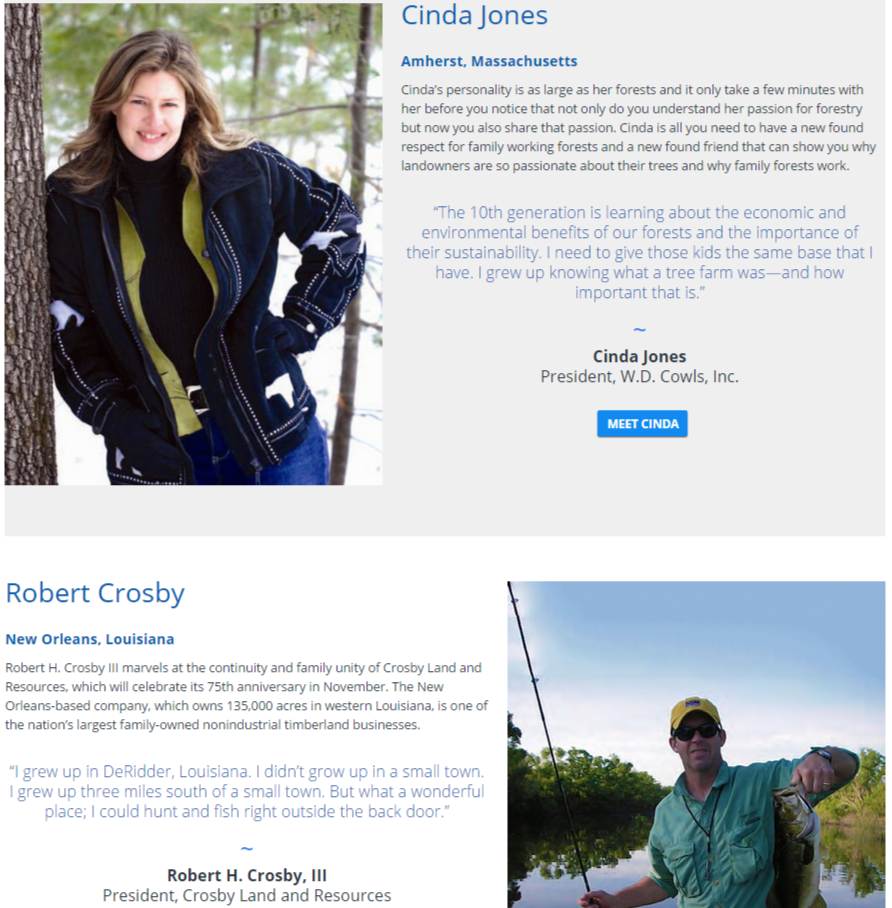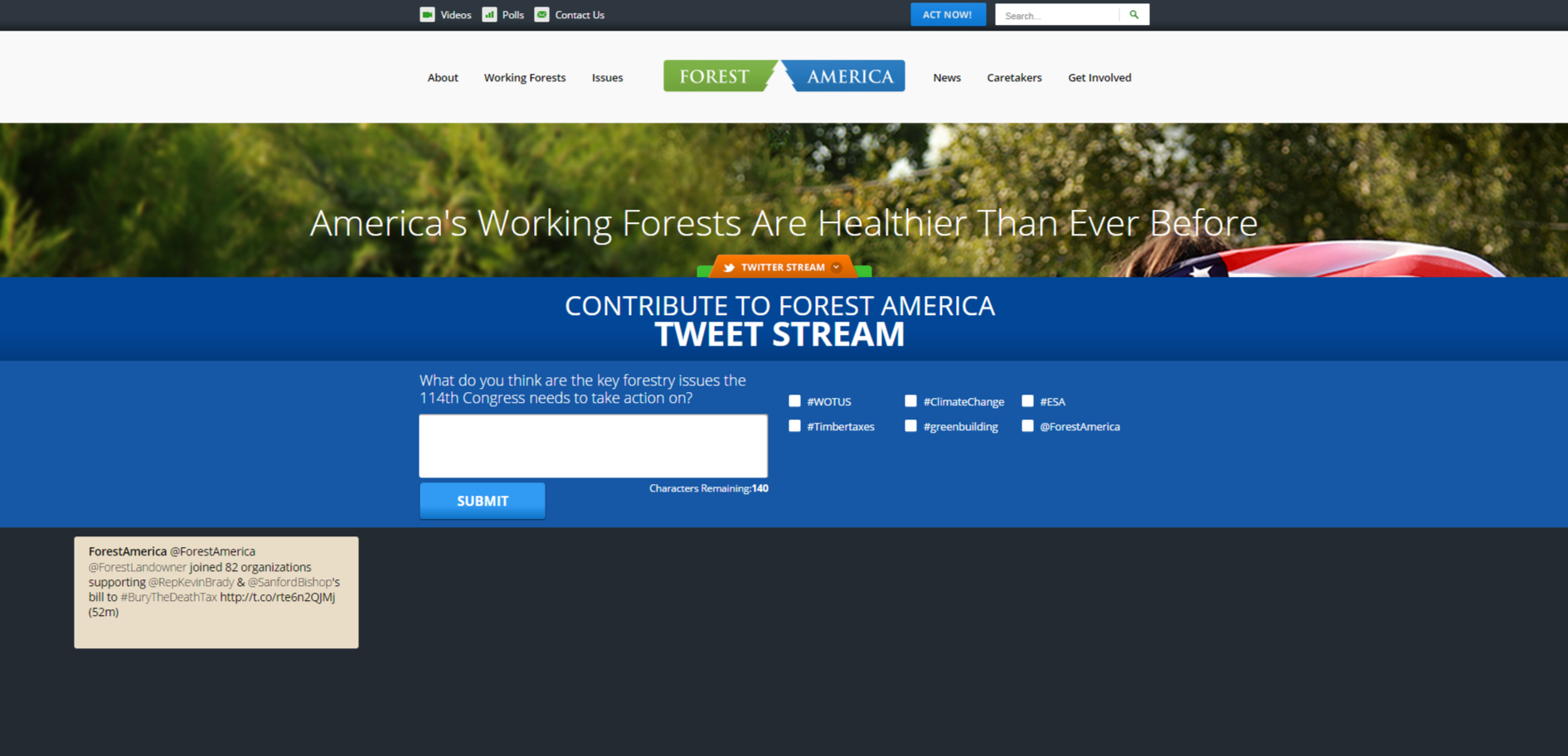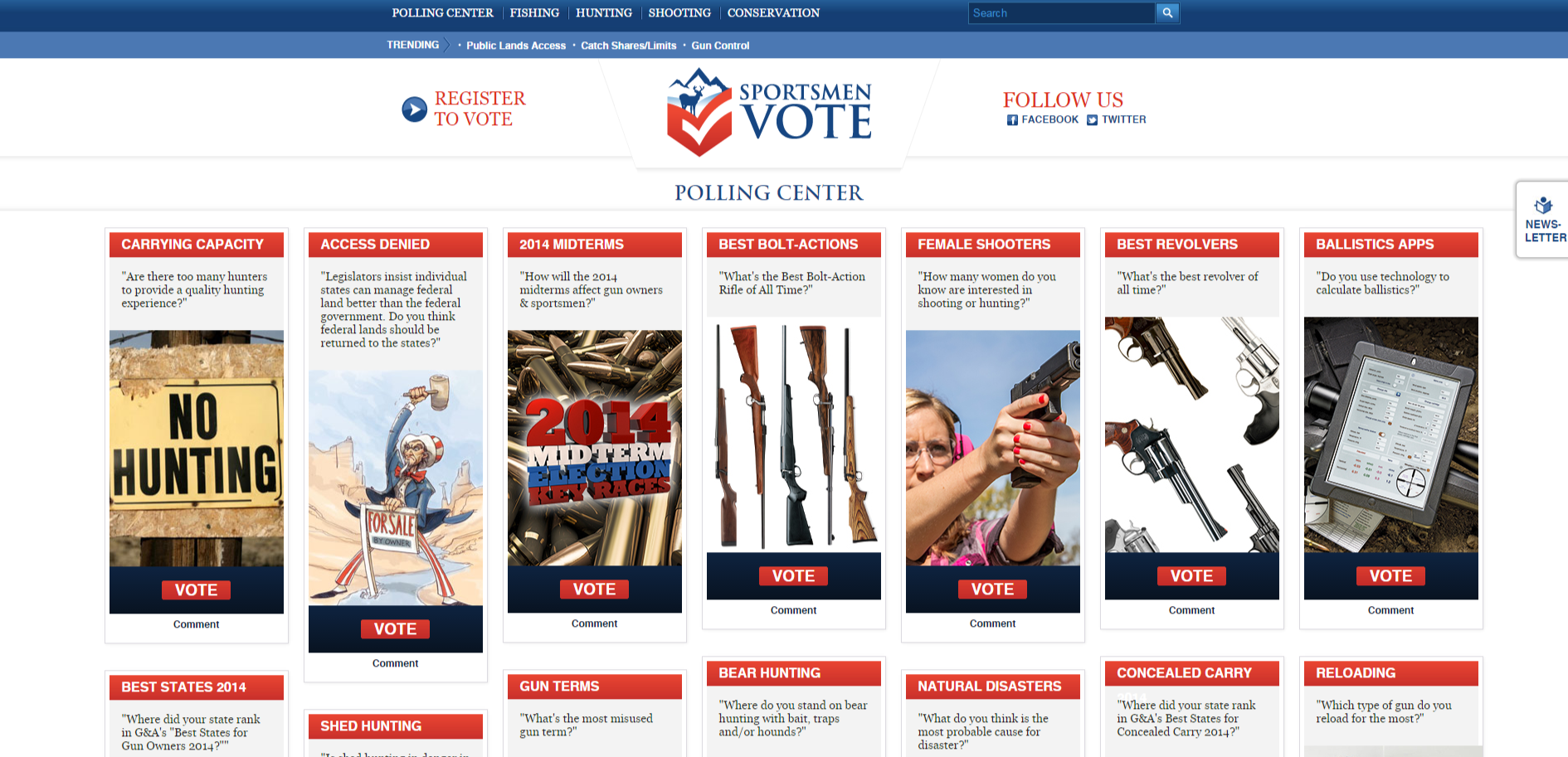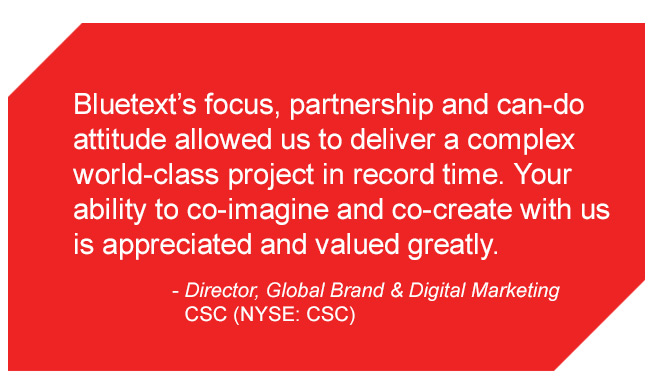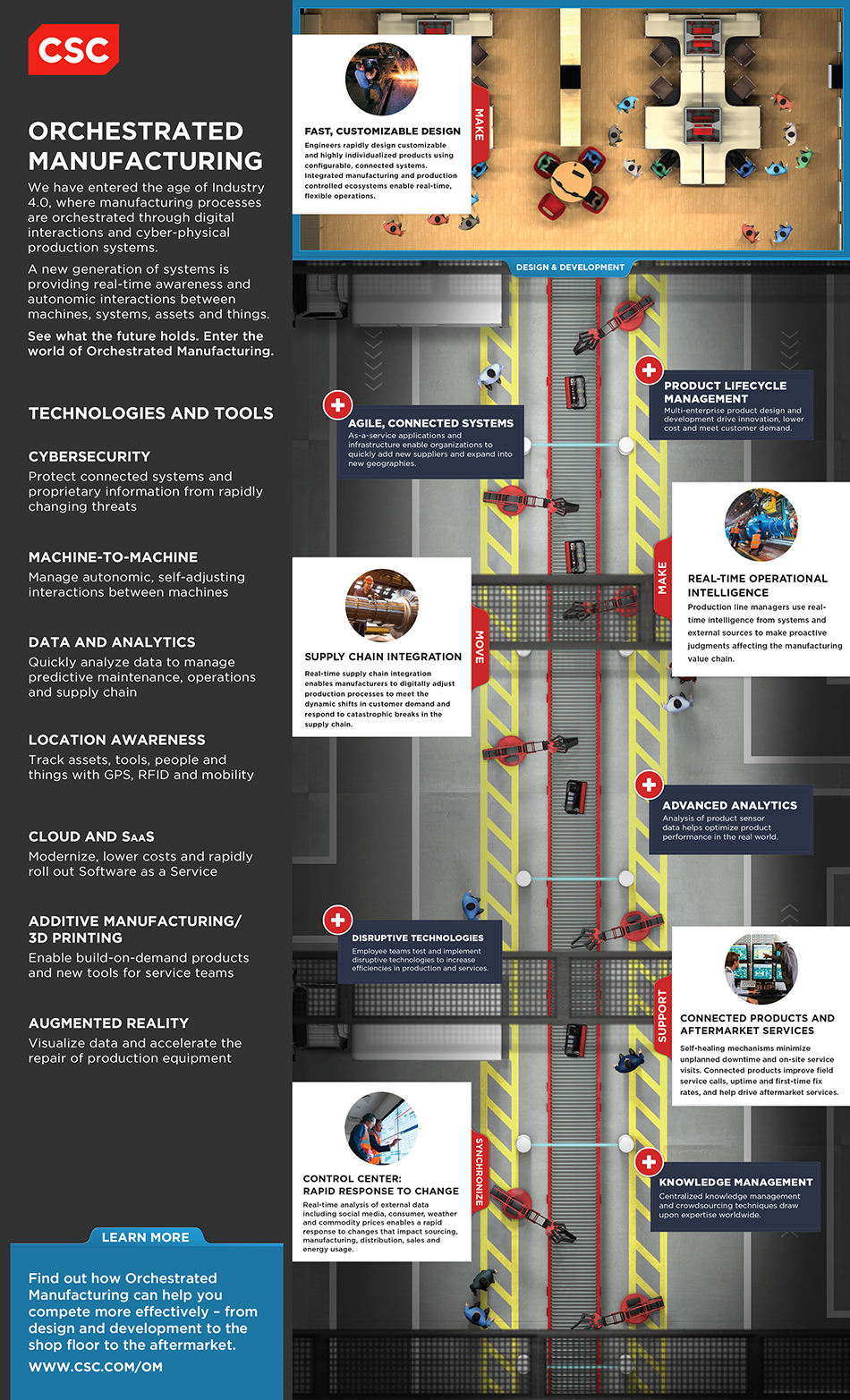As the world has changed in the blink of an eye, so has the way we market to consumers. Now, more than ever, your website exists as BY FAR THE MOST IMPORTANT doorway to your brand and your brand experience. While stores stay shut, and face-to-face interaction is vastly limited, brands will rely on reaching their target audiences via their websites. Therefore, your website is mission-critical to your success.
Website accessibility, or the practice of ensuring websites are available to everyone, regardless of their abilities, has always been a crucial part of website design and development. But as website accessibility gains momentum, meeting and exceeding accessibility standards has become even more top-of-mind. Website design and development agencies have begun to ingrain accessibility standards into their designs; meeting these requirements is no longer a “nice-to-have.”
Accessibility Requirements Are Legal Requirements
According to Dean Schuster, user experience design strategist, “In 2019, the United States Supreme Court upheld the notion that all sites conform to the W3C’s Web Content Accessibility Guidelines (WCAG) AA standard.” With these requirements now legal requirements, website design and development agencies have upped their game to ensure their websites are readily accessible to anyone who wants to browse.
ADA compliance is now established legal precedent for U.S. websites. At a high level, accessibility regulations are broken out into four categories: Perceivable, Operable, Understandable, and Robust. In other words, all content must be “POUR”:
- Perceivable: Users must be able to perceive the information that is being presented. Perceivable guidelines include text alternatives for any non-text content, time-based media alternatives, adaptability, and distinguishability.
- Operable: Website components and navigation must be operable. These guidelines include keyboard accessibility, providing enough time for users to read and use content, providing navigable content, and providing input modalities.
- Understandable: Users must be able to understand the information and the operation of the user interface. Understandable guidelines include readability, predictability, and input assistance, or helping users avoid and correct mistakes.
- Robust: Content must be robust enough to be interpreted by a wide variety of users, including assistive technologies.
Ensuring your website is accessible can be overwhelming, which is where website design and development agencies come in. Building and maintaining an accessible website starts with the design and development process.
 Meeting Accessibility Standards Begins with Design
Meeting Accessibility Standards Begins with Design
Ensuring website designs are accessible to all impacts the entire website design process; designers must think long and hard about the limitations of visual formats. Often, we deem the skills we learn within a certain context as “normal.” Increasingly stringent accessibility standards will require designers to step outside of their “normal” and rethink each design through the lens of a website user who may not be as abled as they are.
The transition from professional website designer to accessibility expert is well underway and this transition will only accelerate as 2020 progresses.
Website Development Impacts Accessibility at a Foundational Level
Website designers are not the only ones affected by stricter accessibility regulations – website developers will also be impacted at a foundational level. Developers must constantly work to maintain knowledge of the continuously evolving standards and best practices, accounting for practical use-cases within the disabled community while using caution when approaching newer programmatic technologies.
Website designers and developers who stay ahead of this trend and embrace website accessibility are positioned to deliver more accessible products. As standards and best practices continue to evolve, website design and development agencies must continue to meet the criteria necessary to ensure that their websites are accessible to everyone on the internet.
Use Your Online Presence to Empower the Disabled Community
When translating your business to the digital world, a lot of thought goes into making sure your business is represented correctly; between your corporate visual identity and the messaging that makes your business unique, each of these foundational building blocks come together to create a unified online presence. Your online presence should be accessible to everyone, including the 18.7% of Americans with a disability. Supporting these users and ensuring your website offerings are accessible to everyone on the internet should always be a top priority, regardless of the legal ramifications.
To learn more about our experience pertaining to accessibility, check out our case study featuring our work with Level Access, the leading provider of accessibility solutions and software.
When it comes to marketing and communications, government contractors and public sector IT providers face a set of unique challenges. For one, the customer base of Federal, state and local decision makers responsible for purchasing technology products and services – ranging from CIOs and CTOs to program managers, IT managers and procurement officers –represents a finite group that can be difficult to reach.
Compounding this predicament is the fact that government contractors must not only market their brand, product and services to these decision makers, but also time these marketing efforts strategically. This means building awareness far enough in advance of a contract award, and then sustaining marketing and PR efforts throughout what can be a multi-year process from pre-RFP to the contract award – and even beyond due to potential contract protests, delays and budgetary obstacles.
Marketing to agency decision makers is just one piece of the puzzle. For small to mid-sized contractors, marketing and public relations efforts must often extend to larger prime contractors in order to ensure these lesser-known firms are on the radar when Primes are assembling teams to pursue contracts. Large contractors, for their part, must also market needs and capabilities to smaller partners that might hold an elusive product/service, market expertise, status or agency relationship.
We have assembled 6 ways that forward-thinking contractors and IT providers can grow their business and contract opportunities by looking beyond traditional marketing, advertising and public relations tactics.
Leverage B2G responsive landing pages
Responsive design is a critical website approach for providing customers with a seamless experience across all device sizes. With a responsive website, government contractors and IT providers can be in front of buyers at every step of their online journey. A user viewing a website on the go via a mobile device can have the same powerful experience as when sitting in their office.
Responsive websites provide continuity between different viewing contexts, remaining completely agnostic to the type of device used and the size of the screen the user has. Responsive websites also rank higher in search engines’ rankings, as Google recommends responsive web design because having a single URL for desktop and mobile sites makes it easier for Google to discover content and for Google’s algorithms – which are constantly changing – to assign indexing properties to content.
It was the need for a responsive website that brought GovDelivery, which enables public sector organizations to connect with more people and to get those people to act, to Bluetext.
As the number one referrer of traffic to hundreds of government websites, including IRS.gov, SBA.gov, FEMA.gov, IN.gov, and BART.gov, the GovDelivery Communications Cloud is an enterprise-class, cloud-based platform that allows government organizations to create and send billions of messages to more than 60 million people around the world. Bluetext was hired by GovDelivery to help them reach public sector organizations that can benefit with tremendous cost savings while reaching more people, automating complex communications and driving mission value through deeper engagement with the public.
For this responsive design project, Bluetext conceived and designed a responsive landing page with an infographic demonstrating the benefits of using GovDelivery for government agencies as the centerpiece of the campaign. We also developed a responsive email template and infographic poster to be used across many marketing channels.
Extend reach and share budget with B2G partner campaigns
While going it alone from a marketing and public relations perspective provides a company with more control over a campaign, it also can be costly and restrict the reach and impact that could otherwise be achieved by aligning in an innovative way with industry partners.
Bluetext has worked on numerous occasions with industry partners that align around a specific campaign targeting government decision makers. Govplace, a leading enterprise IT solutions provider exclusively to the public sector, turned to Bluetext to develop FedInnovation, a destination designed to help government agency executives get the latest information on current technology challenges and solutions for big data, cloud, security, mobility and storage. Developed in conjunction with leading technology providers including Dell, Intel Security and VMWare, it includes exclusive content, videos, blogs, and real-time social feeds.
FedInnovation combines relevant, fresh content, complementary offers, and financial resources to deliver an educational platform to drive awareness and leads for Govplace across its target market. The development of platforms is a continued focus for Bluetext as we look to conceptualize, design and develop creative solutions that deliver measurable business impact for our clients. It is increasingly clear that customers of our clients demand unique experiences with premium content delivered in an easy to consume manner.
Another partner campaign targeting U.S. public sector executed by Bluetext was FutureAgency.com, a digital content experience effort on behalf of McAfee and Intel that depicted virtually a “future government agency.” For this project, Bluetext created a virtual experience around client subject matter experts in an effort to present content for government decision makers in a more engaging fashion. Rather than static white papers and marketing slicks that often go unread or unfinished, Bluetext created an experience whereby avatars of actual company thought leaders were created, and they delivered presentations on topics in a virtual conference environment. The clients found length and quality of site visitor engagement superior to that of traditional white papers and similar content.
Create compelling B2G digital experiences to reach decision makers
The web has become a go-to resource for decision makers to research products and services prior to purchase. Product sheets, white papers and other pieces of online collateral can be useful supporting resources for government decision makers, but will hardly help contractors stand out in a crowded marketplace.
Recognizing this, government contractors and IT providers are creating more dynamic, immersive digital experiences that can more effectively engage target constituencies and impact the decision making process. Additionally, these experiences are molded to be as valuable as any in-person interaction site visitors would have with products and services.
A recent Bluetext project showcases a forward-thinking technology provider, CSC, which was seeking to ensure prospective customers could have a similar experience as they would if they were physically at CSC’s corporate headquarters.
Bluetext designed and built CSC’s Digital Briefing Center, a virtual experience where clients and CSC’s entire ecosystem can come to learn about CSC’s key technology conversations across its target verticals.
Bluetext designed a virtual office building where each floor represents a specific vertical industry, and visitors can learn about CSC’s key solutions and experience across cloud computing, big data, applications, cyber security, and mobility. While not specific to the government market, it is indicative of how “stickier” digital experiences are reshaping how existing and prospective customers interact with content.
Highlight customer innovation
No matter how large or well-known a government contractor/Federal IT provider is, gaining approval from an agency to speak publicly about a technology project is often mission impossible. Agencies must be careful not to appear to endorse a specific vendor in public comments or a press release quote, and even when project leaders are amenable, the process often grinds to a halt with the more conservative public affairs officers.
As such, vendors often have their hands tied on how to showcase a successful project so that other agencies – or even other decision makers within the same agency – will take notice. An approach that can bear more fruit involves shining the spotlight on an agency leader or the agency itself through awards and speaking opportunities.
Multiple editorial publications and associations hold annual award programs that showcase outstanding IT projects and agency leaders at the federal, state and local government level. Agencies tend to be more open to sharing an IT story through an award because it demonstrates innovation and can assist with employee morale and retention.
Beyond award programs, there is also significant benefit in generating media coverage and awareness of state & local customer projects. These agency customers tend to be more amenable to participating in public relations campaigns, and the drawing attention to these projects can demonstrate capabilities to prospective Federal customers as well.
Develop targeted B2G campaign to pursue a specific contract
As contractors and IT providers know all too well, winning an agency contract requires a very different sales cycle than a small business user signing up online for Dropbox or a similar “as-a-Service” software offering.
At some level, there will always be marketing activities designed to reach decision-makers across multiple civilian or military agencies – and in some cases both segments. These external efforts may involve communicating product capabilities, service chops, or the expertise of the contractor’s team. But in today’s hyper-competitive market for agency contracts, developing innovative, targeted campaigns in pursuit of a specific contract or that are designed to reach decision makers at a particular agency, can make the difference between a game-changing contract win and a devastating loss.
Bluetext is increasingly tasked to partner with contractors in developing innovative branding and outreach campaigns around a specific contract pursuit. In early 2014, L-3 Communications, in partnership with Harris Corporation, hired Bluetext to help them pursue the Air Force’s $1B Satellite Control Network (AFSCN) Modifications, Maintenance & Operations (CAMMO) Contract.
Bluetext worked with the L-3/Harris Capture teams to develop a campaign strategy that would position them as a Prime by highlighting the many advantages they bring to the table. The overarching campaign theme Bluetext developed is:
“The Power of Partnership, From Vision to Reality”
The creative strategy of this project began with the core concept of the ad, “from vision to reality.” The left side of the ad is a wireframe representing the vision with the right side representing its reality. After the wireframe of the satellite was created, it was overlaid on top of the red diagonal to create a striking visual element to draw attention to the campaign. The first series of ads were placed in high visibility areas inside of Colorado Springs Airport, a key travel hub for Air Force brass. The media plan for the campaign also includes online, print and OOH media placed strategically to maximize reach and frequency throughout the entire contract RFP and award lifecycle.
Focus on agency challenge, not yourself
Dramatic changes in staffing and mission of government IT media outlets means that the days of getting a product reviewed or corporate profile written are for the most part a thing of the past. As such, contracts and IT providers must get far more creative when it comes to communicating capabilities.
Government IT press don’t want to hear about products. They want to hear about trends and challenges sweeping through agencies, and how contractors and IT providers are developing solutions to solve those challenges.
This was the backdrop for a media strategy Bluetext architected for Adobe Government. Over the past few years, government-wide budget cuts have been swift and relatively unsparing in their impact on agency in-person conferences and training events. This presented a significant challenge for agencies seeking to maintain the collaboration and education benefits these events delivered.
The challenge dovetailed with Adobe’s web conferencing solution Adobe Connect, which was seeing a rise in demand in the public sector due to pullbacks in physical, in-person conferences. Bluetext built a PR campaign around this angle that included a pair of thought leadership articles (one targeting the broad federal IT community and one targeting military decision makers), generating multiple articles around this topic in key federal, state and local media outlets, including:
Federal Computer Week – Budget cuts push conferences online
Washington Technology – Budget cuts, scandal fuel videoconferencing boom
Federal Computer Week – Could virtual meetings replace conferences in sequestration age?
Defense News – Communicating in an era of canceled conferences
Federal Computer Week – Defense Connect Online hits milestone
State Tech – Mobile Video Conferencing Powers Collaboration on the Go
Federal Computer Week – DOD connects online to cut travel
Government Executive/NextGov – Agencies are saving millions with virtual events
Federal Computer Week – Cutting costs with virtual conferencing
Reaching and impacting government decision makers requires government contractors and IT providers to push beyond the status quo and engage with partners able to help develop and deliver innovative campaigns to grow their business and increase contract opportunities.
This goes to the heart of every company’s SEO strategy. The clues come in a patent filing for something called an “implied link.” Before I explain why this is important, let’s first take a trip back to the early days of SEO and link-building.
Early on, Google would evaluate where a site ranks for any given search by looking at how many other sites were linking back to that page. If you were a valuable site, visitors would link to you in order to share that with their audience or to cite you as a good resource. That type of analysis would seem like an obvious way to measure the quality of the site.
But SEO gurus are always trying to stay one step ahead, and once link-farms and other shady techniques for creating myriads of back-links became prevalent, Google recognized that there’s no way to verify whether a link was added because a user genuinely likes the content or whether the link was paid for. The quality of a link can be corrupted through a wide variety of Black Hat tricks, and thus the value of all links came into question.
And while Google has updated its algorithms on numerous occasions over the years, that doesn’t mean that links aren’t still valuable for SEO. They are just much less valuable than they once were. Google is now much more selective about the quality of the site that is doing the linking. The New York Times continues to be the gold standard for the most valuable links.
But what if a publication like the Times mentions a brand or its product without a hyperlink? Shouldn’t that carry some weight, even though it doesn’t include a url?
That’s where Google’s patent comes into play. SEO insiders believe that the patent is related to last year’s Panda update, and that it describes a method for analyzing the value of “implied links,” that is, mentions on prominent sites without a link.
Let’s say the Times mentions in an article the website of NewCo as a great resource for a particular topic, but doesn’t include a link to NewCo’s website. Previously, there really wasn’t a measurable way for NewCo to benefit from that quality mention. With implied links, Google sees the mention in the Times article and factors that into its search ranking.
Implied links are also used as a sort of quality control tool for back-links in order to identify those that are most likely the result of Black Hat tricks. For example, if Google sees numerous incoming links from sites of questionable quality, it might search for implied links and find that no one is talking about that brand across the internet. Google looks at that evidence from the implied links to determine if the back-links are real and adjusts the rankings accordingly.
Here are four tips for adapting to Google’s focus on implied links:
• Don’t abandon your link-building strategy. Earned links are still effective when they come from valued sites. The most valuable links will still be for relevant, unique content.
• Brand reputation is key. When asking for mentions on other sites, try to have them use your brand name as much as possible. The same is true when you are posting on other sites. Use your brand name. Do the same in descriptive fields such as bios at the bottom of contributed content.
• Engage your audiences in conversation. Similar to word-of-mouth marketing, the more your brand name is being mentioned, even without links, the more it will benefit your SEO. Encourage that conversation as much as you can.
• Be creative and flexible. Google is always evolving its search engine algorithms. It’s difficult, but not impossible, to predict how they may change over the next year, or how effective today’s best practices will be tomorrow if you know how to follow the clues.
Google has done it again. It has quietly released yet another tweak to its search engine that will have a dramatic impact on how a company’s website performs when viewers are searching. The bottom line for organizations: The user experience is becoming more and more important to a site’s rankings.
If you’re a marketing executive who has devoted a lot of time and resources to improving your SEO, you may find that keyword analysis and other search engine techniques are no longer enough. While still important, other site attributes may play just as big a role in where your site ranks in search results.
You may recall the last significant adjustment from Google, dubbed in the media as “MobileGeddon.” That update simply noted that a user’s experience from a mobile device was important. If a website wasn’t appropriately mobile-optimized for viewers, its ranking would be lower when a visitor was searching from their mobile device, and sites that were mobile-friendly would rank higher. That version of the Google algorithm got a lot of attention.
This latest rev has been well under the radar screen. There were no announcements from Google. In fact, it only came to light after search engine aficionados began sounding the alarms in early May, when they noticed that some sites’ rankings were plummeting. Two weeks passed before Google gave any official acknowledgment of what the company simply calls its “Quality Update.” Search engine wonks have dubbed it the “Phantom Update.”
So what does it do?
“How Google assesses quality is sometimes a thing of mystery,” writes Thomas Smale of Entrepeneur.com, “but we do know that it wants to provide users the the best information possible.”
The new Google update rewards sites that have a good user experience in addition to what it considers quality content. Having high quality content is important, but it’s also about rewarding sites that deliver a better experience, and punishing those who don’t deliver a good experience. So while redundant and thin content will get dinged, so too will sites that have self-starting videos, banner ads, and 404 errors.Here are four ways to make sure your site delivers the type of user experience that will be rewarded by Google’s search engine:
1) Get Rid of Thin Content. According to Google, this can include automatically-generated articles, thin affiliate pages, thin content from other sources such as the “scraped” content of low-quality guest blog posts, and “Doorway” pages created to rank highly for specific search queries, which Google views as bad for users because they end up taking the user to essentially the same destination. These techniques don’t provide users with substantially unique or valuable content. As a result, Google has applied a manual spam action to the portions of a site that include this type of thin content.
2) Remove Any Auto-Play Videos. Like many disruptive ad formats these are seen as providing a bad user experience and are punished by Google.
3) Filter User-Generated Content. That means having a strong moderator function for user-submitted posts to make sure that any blatant self-promotion or answers that are too general to be useful aren’t marked as spam by Google.
4) Eliminate Annoying Ad Formats. If your site begins to attract enough visitors so that advertisers want to pay for that real estate, be cautious. Excessive and disruptive ad displays, including above-the-fold ads, pop-ups, and similar techniques, are viewed by Google as a bad user experience and treated accordingly.
Websites should be designed to do what they were intended for in the first place; delivering a high-quality experience to users. That’s what Google likes and rewards in the race for page rankings.
Trade associations that represent the interests of and provide services for their members, be they large companies and organizations or individuals, all face the challenge of retaining their current members every year, growing their member base and reaching non-members who may be involved in the policy or business arenas. Competition among associations is fierce. Even without competitive pressures, it’s not always easy to convince individuals, organizations, small business or large corporations to devote resources and pay fees to an industry association year-after-year. They not only have to see the value, they need to feel part of the group and believe that it is looking out for their interests and providing them the services they want.
With industry associations as with other organizations, the website is the hub of activity for members and others who want to know about the group and its issues. Too often, the hub is ignored because it’s not viewed as central to the mission of the group. We think a strong website is essential, because that is the first place that any target audience is going to look for information. Bluetext has helped dozens of industry and membership organizations leverage their web presence to better recruit and retain their members, grow their revenues and maintain a close relationship with their constituents. Here are our top five tips:
Make It Engaging. Compelling website design and graphics are extremely important to reach those key audiences and to keep them interacting with the site. First impressions are important, and if the design doesn’t resonate, the visitor may leave quickly without engaging. A tired or out-of-date design signals that the association may not have the resources or digital savvy to have a modern and fresh look and feel. The design should also allow the visitor to find a wide range of information that spans their interests. Visitors come to association sites not to purchase a specific product, but to learn about a variety of topics, policy issues, and services that are relevant to them. Burying that information under layers of tabs may lose the target audience. A responsive design is a must, as more and more individuals are accessing the sites through mobile and tablet devices. We also recommend longer scrolls as visitors swipe to navigate the screen, rather than waiting for a new page to refresh as they move about the site.
Make It Personal. This should be fairly obvious, but it is surprising how many membership organizations and trade groups fail to highlight their own members. Why is this important? Because individuals need to be able to relate to the other people in the organization, to understand the types of people who are also part of the group and what value they get from their dues. Not only does this draw in new members, but it also serves to “humanize” the organization by putting faces and stories on what otherwise might seem like a faceless group.
We recommend setting up a section on the website that is full of videos and scrapbook-type photos of members and their families. For Forest America, which represents the nation’s private forest owners, we set up a section called “Caretakers” on its website, with profiles of dozens of landowners and their families who are part of the organization. To capture the footage, we take a video crew to their annual meetings and film them during breaks telling their stories—with other family members at their side. We add in photos that they send us and any other materials that help tell a personal story. The Caretakers section serves three important functions:
1) It shows visitors to the site, including policymakers and other organizations, the human faces that comprise the organization;
2) It helps with recruitment, as other private forest landowners see that they can be part of the team; and
3) It energizes current members, who love to see their colleagues and friends—and their own families—in a scrapbook setting.
Give Them The Tools They Need. Members are busy, so any shortcuts that make their lives easier are welcome. For the Society of Human Resource Management, a membership organization that includes thousands of human resources executives, retention was suffering due to the economic downturn. HR directors needed an easy way to convince their CEOs that membership in SHRM paid valuable dividends in training and resources for their annual fees. Rather than their typical request for approval, which might be shuffled to the bottom of the in-box, we built a tool for members that with just a little bit of information would create a compelling brief presentation to be send to their top executives. The deck, which explains the value of joining or renewing their membership, was far more likely to get the attention and approval of the boss. After launching the new tool, SHRM saw its renewals increase dramatically.
Make It Easy. Not only do members appreciate better tools, they need easy ways to take action and interact with the organization. Having persistent Calls-To-Action across every page of the site is essential to get the type of engagement that demonstrates value for the organization. In some cases, those Calls-To-Action can be as simple as “Join Now.” But for advocacy sites, having a sophisticated application built-in that can send a tailored email or letter to a Member of Congress or a regulatory agency serves many purposes.
First and foremost, individuals will contact policymakers only if it’s a relatively simple process. Most do not have the time to write a note to their Congressmen, nor do they know the issues well-enough. In addition, they might have no idea how to find the right policy-maker and obtain their email or physical address. We have installed a number of effective applications for associations that take the burden off of the member. By filling out, for example, their zip code, these tools can auto-populate a letter with the correct Member of Congress and address, and offer a “Mad Lib” draft where certain fields can easily be completed.
Build In Engagement. There are excellent new tools to engage visitors to the site. The first is obvious: Make social sharing persistent on every page and section of the site. Whenever a visitor sees anything they like—a position paper, an infographic, a video or a blog post—encourage them to push that around to their larger network.
Another tool that we have implemented in a number of sites is a Tweet-Builder—a tool that poses a topic and then invites the visit to complete a tweet, with recommended hashtags that can be included. That tweet then goes in real-time into the associations Twitter Stream.
The benefits of this tool are that it encourages the visitor to participate while helping to populate the social media arena. It also gives an incentive for that person to follow the group on social media, and to broadcast posts out to their larger community.
A third tool that we implemented is a polling functionality—that poses questions on the site in the form of polling questions, and then displays the results on that same page. Designed to resemble a Pinterest Page, polling tools invite participation and give the visitor a reason to keep coming back to the site. This is one that we built for a media company that publishes a variety of sportsmen-focused magazines.
What’s more valuable to a company? A visitor to its website who spends 15 minutes scanning a wide variety of pages, or a visitor who comes and goes in three minutes? The obvious answer is the first one, because as any marketing executive can tell you, “stickiness” and time on site are drivers for the website experience. But what if the first person is taking so long because they can’t find what they are looking for and the second person came and left quickly because they readily found the white paper they wanted or even transacted? The lesson here is not that time on site isn’t the only metric you should be evaluating. In fact, using metrics to evaluate the performance of your site may not be as straightforward as it looks.
Take the recent news about Instagram over-taking Twitter in terms of volume last year. “Instagram Is Now Bigger Than Twitter” was the headline everywhere from CNBC to Re/Code to the New York Times. But how meaningful is that comparison? Twitter has some 284 million active monthly users, Instagram more than 300 million. Yet, as an article in Slate describes it, the two are different: “One is largely private, the other largely public. One focuses on photos, the other on ideas. They’re both very large, and they’re both growing.”
Another metric that is often bandied about is unique monthly visitors. This measures the number of people that come to a site and discounts repeat visitors. Again, that might sound like the ultimate metric for evaluating the attention that a site is getting. Still, it doesn’t measure what those unique visitors are doing on the site. If it is a content-driven website, like the Huffington Post or Buzzfeed, a more important measure may be “total time reading.” There, the number of visitors who come and leave quickly isn’t very valuable to advertisers who provide the revenue for content-driven sites. Total time reading is far more important, and smart advertisers recognize the difference and factor that in accordingly.
A common measure reported on widely in the media when comparing different brands’ web traffic is the number of website visitors. This is frequently sourced to web measurement and analysis companies who make these types of evaluations. But even these can be highly misleading. First and foremost, according to a recent post in medium.com, the most widely quoted source of web traffic, Comscore Networks, only counts U.S. users. If a brand is global or operates overseas like a many government defense contractors, the metrics will not include that traffic in the totals. In addition, these reports are often based on sampling which can distort the actual numbers for smaller brands with a more limited number of visitors. It’s also not yet clear whether these services are including site traffic from mobile apps, which may be a very important measurement tool for many websites as more and more visitors use mobile devices to access information on the web.
So if the three most commonly-used metrics for measuring the success of a website—time on site, unique monthly visitors, and total traffic—all have their flaws, what is the best way to evaluate how a site is doing?
The answer is there is no best answer. All three of those key metrics are useful, but they need to be taken for what they are which is a set of imprecise and blunt tools.
A better way to look at the most effective mix of metrics is to find the best blend that will help evaluate “value.” Time on site is important, but only as an element in value. In reality, for media websites, advertisers don’t actually want a customer’s time, they want to make an impression that will lead to a transaction or buying decision. On the other hand, for an enterprise site offering IT solutions where the buying cycle is long and a visit to the website may be part of the research process, time is valuable as a measurement for a customer’s information gathering step in the cycle. Where they go on the site—to resources, for example—may say a great deal about where that customer is in the cycle and how to best to pursue him or her.
Where the visitor enters the site may be a key performance indicator for both organic search results or for a lead-generation driven campaign that takes the visitor directly to the intended content. Spending time on the blog page may be an indicator that the site’s content is fresh and engaging and is bringing target audiences back for more. Reading product and solutions pages may indicate a prospect that needs to be watched to make sure they are getting what they need to make a purchasing decision.
The right answer is that value has to be a combination of a number of factors, and using multiple metrics can help understand if the site is achieving its goal of providing that value. But no marketer should get too hung up on any single measurement.
Ever since Google’s last significant evolution of its search engine algorithm, known as Hummingbird, the marketing world has been treading water trying to understand how to drive search traffic to digital campaigns and websites. In the pre-Hummingbird era, search could be gamed by gaining multiple links back to a page and installing keywords throughout the content. So-called “Black Hat” experts charged a lot of money to get around the rules. In today’s Hummingbird era, it’s no longer only about keywords, but rather having good content with a smart keyword strategy that is relevant to the target audience. Attempting to manipulate the system through meaningless links and keyword overload no longer affects the search results.
While the Google algorithm is extremely complex, SEO itself is not complicated. It’s actually very easy to understand. In sum, Google’s algorithms are designed to serve the best, most relevant content to users. That’s the filter that any company or organization needs to use when deciding whether any particular activity that is part of your online strategy will have an impact on your SEO.
It’s just difficult to execute.
For example, if you’re thinking about blasting a request to bloggers to link back to your site, don’t bother. If they haven’t created good content, it won’t make a difference. Want to change the title of every page on your site to your key search term? It won’t work. Thinking about jamming every keyword into a blog post? If it’s not good content, don’t do it.
The challenge is determining the definition of “good content,” at least as far as Google is concerned. That’s where the hard work begins. Good content is not a subjective evaluation, but rather an analysis that the web page or blog post is relevant to users as measured both by the type of content and the extent of its sharing by other influential users. Let’s break those apart and take a closer look.
The merit of the content is important because if Hummingbird detects that it’s crammed full of keywords, or that it is copied from other sites or even within other pages of the same site, it will quickly discount the relevance. The Google algorithm will see right through those types of attempts to create SEO-weighted pages. Good content needs to be original and unique.
More importantly, good content is also a measurement of how much that content is linked to or shared by influential sites and individuals. When you have created a blog post or web page with good, relevant content, it is vital to share this with your intended audience and with influencers that they trust. This is the hard part. There are no shortcuts when it comes to developing good content and in getting it in front of your audience. Nor are there easy ways to identify trusted influencers and get the content in front of them.
For the content itself, the goal is not just to be informative and provide the types of information that the target audience is seeking, although that is important. The goal is also to have that information shared, whether via social media platforms or through other sites and feeds. That means it must be interesting and sometimes even provocative so that the intended audience takes the next step and slips it into its own networks. It should challenge the conventional wisdom, offer valuable and actionable insights and educate the audience with information not already known. And it must be relevant to the audience.
How do you find the right influencers for your audience? That’s not easy, either. At Bluetext, we do in-depth research into who is talking about the topics and issues important to our client campaigns, and then evaluate each of those potential influencers to determine the size and reach of their audience. These can include industry insiders, trade journalists and columnists, government officials, and academic experts.
A solid SEO strategy takes time and patience, and a lot of hard work. It’s not complicated, but it is difficult.
CSC turned to Bluetext to design and launch an industry-specific landing page around its approach to targeting the requirements of the manufacturing industry. CSC’s vision is called Orchestrated Manufacturing, and it represents an age where manufacturing processes are orchestrated through digital interactions and cyber-physical production systems. CSC is working with clients to implement advanced solutions that leverage a new generation of systems is providing real-time awareness and autonomic interactions between machines, systems, assets and things.
Bluetext worked with CSC’s digital brand marketing team, as well as their Manufacturing industry marketing team, to design a landing page unlike anything CSC has ever launched inside of its corporate domain. It includes a modern design with one long, scrolling page to showcase the vision and its practical application to the market, and then lead visitors to download key content and interact with CSC.
At Bluetext, we find that many large companies with diverse industry focuses and solution offerings sometimes make it hard for target audiences to find exactly what they are looking for. The idea behind Orchestrated Manufacturing is for CSC to tell its story in a unique way with an online and offline strategy to drive a consistent visual message into the market. The landing page is complemented with two videos that can be used by sales teams to succinctly tell the story, as well as a highly produced poster for sharing at events.
Please check it out at www.csc.com/om. We would love to hear about how you are designing landing pages targeting unique audience groups and what strategies you are finding work best.
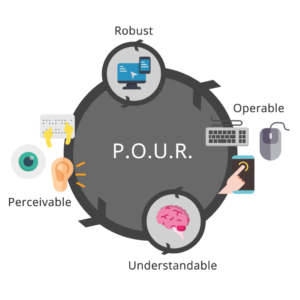 Meeting Accessibility Standards Begins with Design
Meeting Accessibility Standards Begins with Design

